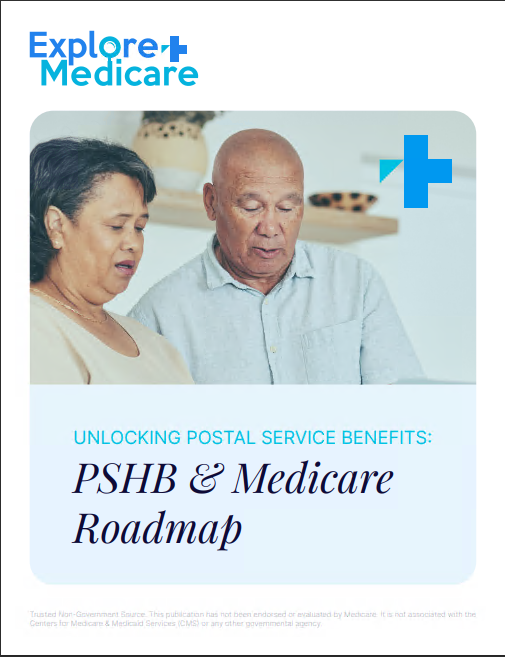Key Takeaways
-
In 2025, a $2,000 annual cap on out-of-pocket prescription drug costs under Medicare Part D offers meaningful financial relief, especially for those with chronic conditions.
-
While the cap eases financial strain, other cost burdens and coverage gaps in Medicare remain, requiring careful planning and review of your health needs.
A Promising Shift in Drug Cost Protections
As of 2025, Medicare beneficiaries finally have a ceiling on how much they spend out-of-pocket for prescription drugs. The new $2,000 annual cap under Medicare Part D is a major change from prior years, when individuals could easily exceed this amount during the coverage gap or catastrophic phase. This reform is part of broader efforts to make healthcare more affordable for older adults, but the question remains: is it enough?
To understand the significance of this cap—and its limitations—it’s important to look at the broader Medicare landscape.
What the $2,000 Out-of-Pocket Cap Really Means
The introduction of this cap eliminates the prior structure that included a deductible phase, an initial coverage phase, a coverage gap (often referred to as the “donut hole”), and a catastrophic phase. In 2025, once you pay $2,000 in out-of-pocket costs for covered prescription drugs, your plan must pay 100% of your additional costs for the rest of the calendar year.
This change:
-
Protects you from runaway drug spending in the latter half of the year.
-
Eliminates the unpredictable costs of the catastrophic coverage phase.
-
Applies automatically to all Medicare Part D plans, including those integrated into Medicare Advantage plans.
It’s a game-changer, but only for specific types of costs and only up to a point.
What’s Still Not Covered by the Cap
Even with this new financial ceiling, there are several gaps you need to be aware of:
-
The $2,000 cap only applies to drugs covered by your Part D plan. If your prescribed drug isn’t on the plan’s formulary, you pay the full price.
-
The cap doesn’t apply to over-the-counter medications.
-
Costs like premiums and pharmacy dispensing fees don’t count toward the cap.
-
Drugs administered in a clinical setting (such as injectables covered under Part B) aren’t part of this limit.
Understanding these boundaries is essential. The cap is helpful—but not comprehensive.
Prescription Payment Plans: Spreading Out the Burden
To further reduce financial stress, Medicare now offers a Prescription Payment Plan. This feature allows you to spread your out-of-pocket costs over the year in monthly installments, even if you hit the $2,000 limit early.
This installment option is voluntary. You need to opt in, and once enrolled, you agree to pay monthly amounts regardless of when you actually fill your prescriptions.
This can benefit you if:
-
You take high-cost medications early in the year.
-
You have a fixed income and prefer predictable monthly expenses.
However, if you miss payments, you may be removed from the plan and held responsible for the remaining balance.
How the Cap Interacts with Other Parts of Medicare
Part A and B Costs Still Matter
While the new cap helps reduce your drug spending under Part D, Medicare Part A (hospital insurance) and Part B (medical insurance) costs continue to rise in 2025. For example:
-
The standard Part B premium is $185 per month.
-
The Part B deductible is $257 for the year.
-
The Part A hospital deductible is $1,676 per benefit period.
So even with relief on prescription drugs, you still need to budget for medical services, hospital stays, and preventive care costs.
Part D Premiums and Deductibles in 2025
In addition to the $2,000 cap, there’s a standard deductible in Part D plans. In 2025, this deductible is $590. You must pay this amount out-of-pocket before your coverage begins to count toward the annual cap.
Also, premiums for Part D vary by plan and may increase if you have a higher income, triggering what’s known as an Income-Related Monthly Adjustment Amount (IRMAA). This can surprise you if your income has changed since retirement.
Are Lower Drug Prices on the Horizon?
Legislation in recent years has given Medicare the ability to negotiate drug prices directly with manufacturers. While this authority is limited to a select list of high-cost drugs in 2025, it’s expected to expand over time.
What this means for you:
-
You may see some high-cost medications fall in price over the coming years.
-
More drugs could become accessible as they move into Part D formularies.
-
However, this is a gradual process, and the full financial impact may take years to materialize.
For now, the $2,000 cap offers the most immediate financial benefit.
High-Cost Drug Users Still Have Planning Needs
If you have a chronic condition that requires expensive prescriptions—such as cancer, multiple sclerosis, or rheumatoid arthritis—the cap helps. But since it only applies to covered drugs and doesn’t eliminate plan premiums or deductibles, you should still:
-
Compare Part D plans during Open Enrollment (October 15–December 7).
-
Confirm your medications are on the plan formulary.
-
Consider plans that offer additional drug coverage or support services.
It’s also wise to review your Annual Notice of Change, which outlines any updates to your plan for the following year.
What About Those With Low Incomes?
If you qualify for the Extra Help program (also known as the Low-Income Subsidy), the $2,000 cap is less significant because your prescription drug costs are already limited. But in 2025, the Extra Help program has expanded to cover more beneficiaries.
This year, more people:
-
Pay reduced or no premiums for Part D plans.
-
Pay lower copays or none at all.
-
Avoid the standard deductible and the annual out-of-pocket cap altogether.
If your income or assets have changed recently, it’s worth checking to see if you now qualify for Extra Help.
Why This Still Isn’t the Whole Picture
The $2,000 out-of-pocket cap is a landmark policy—but it doesn’t solve every challenge related to drug affordability in retirement. You still face:
-
Premium increases across all parts of Medicare.
-
Potential IRMAA surcharges based on income from two years prior.
-
Coverage exclusions for non-formulary or specialty drugs.
-
Out-of-pocket medical expenses beyond prescription drugs.
Even as one piece of the puzzle improves, the broader Medicare landscape remains complex and, for many, financially demanding.
Make the Most of the Cap by Staying Proactive
Here’s what you can do in 2025 to take full advantage of the cap while protecting yourself from other unexpected costs:
-
Review your plan annually to ensure your prescriptions are covered.
-
Use preferred pharmacies when possible to minimize copays.
-
Track your spending to know when you’re approaching the cap.
-
Consider enrolling in the Prescription Payment Plan if spreading costs out helps you manage your finances.
-
Evaluate Medicare Advantage options carefully if you’re enrolled in one that includes Part D, making sure the coverage and network meet your needs.
-
Speak to a licensed agent listed on this website if you need help interpreting your plan details.
A New Era of Cost Control—But Read the Fine Print
The $2,000 drug cap under Medicare Part D is a significant improvement for many older adults who previously faced unmanageable prescription costs. But it’s not a magic solution. It won’t reduce premiums, eliminate all cost-sharing, or protect you from other types of healthcare expenses.
That’s why staying informed and adjusting your plan annually are essential steps to protect your budget and your health. Don’t assume the new cap alone is enough—talk to a licensed agent listed on this website to get personalized help making the most of your Medicare benefits.




